The Eighty Years’ War is also known as the Dutch War of Independence. It stretched from 1568 to 1648 as the new Dutch Republic struggled to free itself from its Spanish masters — and they’re a crucial part of Dutch history.
So, we’re here to explain what happened during this war and why it took so extraordinarily long to end.
Now, your natural inclination might be to blame this delay on a stereotype of Spanish people never being on time. But eighty years is rather a long time, even by Spanish standards.
We’ll start by explaining how the Spanish came to control the Netherlands—after all, they hardly came here for the weather. Then, we’ll give a blow-by-blow (or at least decade-by-decade) account of the war.
We’ll end with a summary of the consequences of what was almost a century of unrest. Buckle up, history buffs!
How did the Eighty Years’ War begin? The Spanish in the Netherlands
The Spanish never really invaded the Netherlands: there was no exciting moment of conquest.
Through royal marriage, political arrangements, and the sheer lack of nationhood in the 15th and 16th centuries, what we know as the Netherlands today slowly came under the control of the Spanish Empire.
That was fine for a while, but then people became discontent with the Empire for a multitude of reasons in the 16th century.
One reason was religion: In 1555, Philip II took over from his father as sovereign of the Hapsburg Netherlands. He was not as liberal about religion as his father and began actively prosecuting Protestants for heresy.
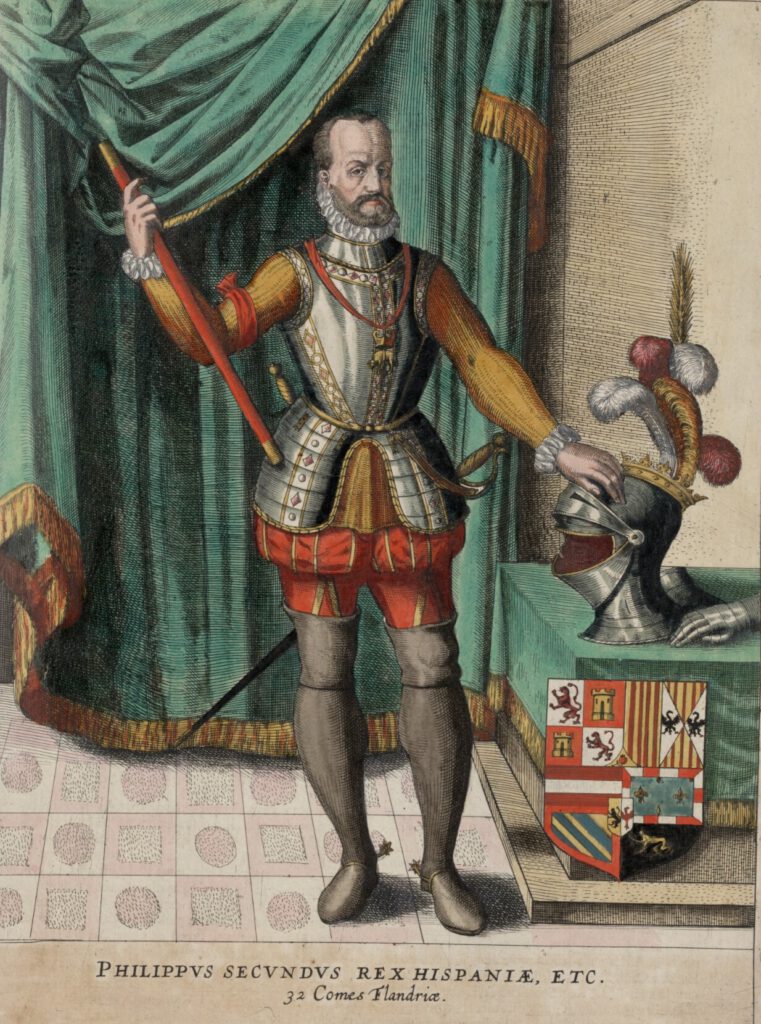
Naturally enough, this wasn’t particularly well received by Dutchies. Noblemen from the Netherlands put together a petition to stop prosecutions, but Philip denied it.
Following some minor rebellions, Philip instituted the Council of Troubles, which arrested 9,000 people and executed 1,000.
These people included high-ranking members of Dutch society. Others, like William of Orange, fled abroad to avoid prosecution.
READ MORE | The history of the Dutch national anthem: the Wilhelmus
More minor rebellions ensued, which Philip’s troops generally easily defeated.
However, the king soon doomed himself by imposing much higher taxes on the Netherlands.
Mostly to fund an expensive war against the Ottoman Empire, which disenchanted those who had previously been loyal to the Habsburg Empire.
The Eighty Years’ War begins: the Spanish seem set to win
The war truly began on April 1, 1572, when the Geuzen, or Sea Beggars, captured the port of Brill. Other cities and towns in the Netherlands decided to defect to the Orange side.
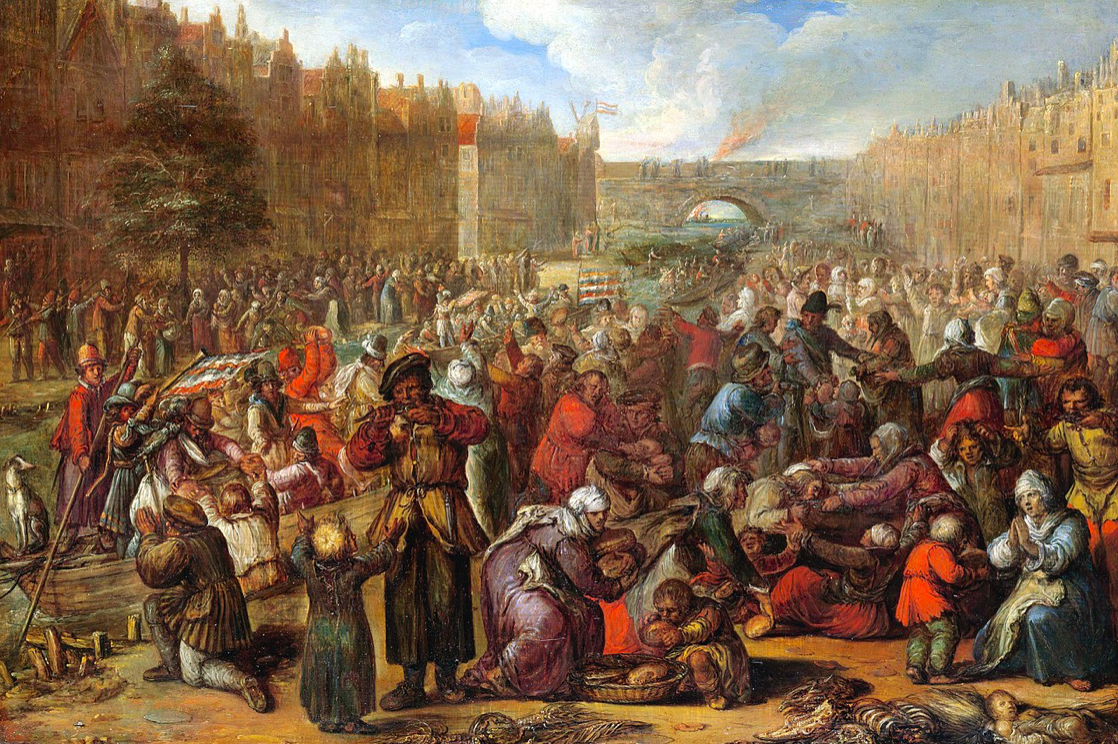
By July, the only major cities still supporting Philip were Amsterdam and Schoonhoven. This was also the period in which the famous Siege of Leiden took place.
Things ran in Philip’s favour for a couple of years as his troops slowly reclaimed the rebel land.
However, by 1576, he had not paid his troops in two years. Quite understandably, several garrisons mutinied and left their posts.
Over the next four years, Philip recaptured all of the southern Netherlands and brought other cities across the country back under the control of the Habsburg empire.
The Dutch Republic’s troops held firm in some parts of the country, but the Spanish outnumbered them.
The French step into the Eighty Years’ War — and don’t really help
In hopes of encouraging the Spanish to back off and enlisting a pretty powerful ally. William of Orange invited the younger brother of the king of France, the Duke of Anjou, to become the constitutional monarch of the Netherlands.
He accepted and had very little influence over the country, experiencing only full support from Brabant (and we all know that doesn’t mean much). 🙄
The Dutch Republic officially seceded from the Spanish on 26 July 1581.
This didn’t do much to change things, except for encouraging a propaganda war in addition to a real war between the two sides.
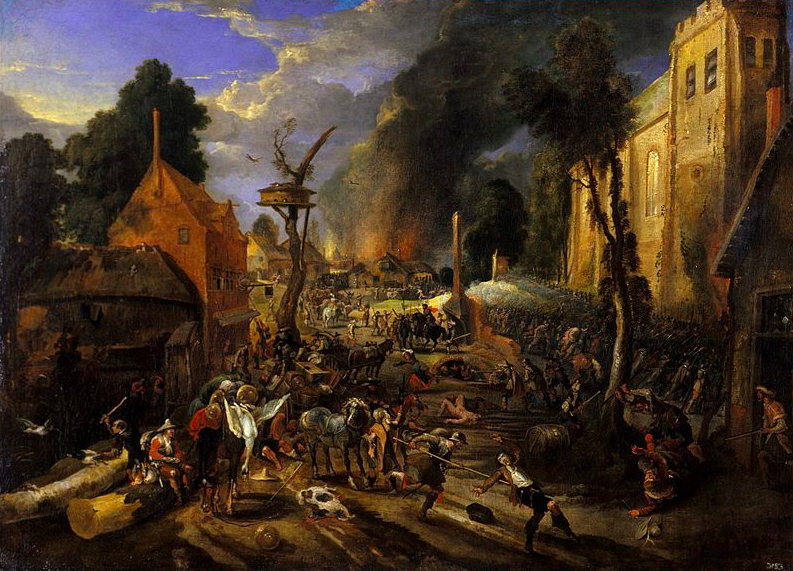
The year 1584 was a disaster for the Dutch, as the Spanish general Parma reclaimed all of Belgium and most of the southern Netherlands.
It got so bad that Orange actually considered accepting the title of Count of Holland and being done with the whole thing.
Then he was assassinated, which put an end to that train of thought, as well as his life.
Losing one of their leaders struck a major blow to the Dutch troops. The States-General decided to send an embassy to France, asking the French King Henry if he would want to become King of the Netherlands as well.
However, things were not going well internally in France at the time, so Henry decided that defying the Spanish king would be unwise.
The English get involved in the Eighty Years’ War and are mostly a nuisance as usual
Next, the Dutch turned to the English queen, Elizabeth I, for help.
She agreed to make the burgeoning Dutch Republic a protectorate of England and sent thousands of troops there under the eye of Sir Robert Dudley, one of her favourite courtiers.
Dudley came into frequent conflict with the Dutchies he was supposed to be protecting, but his power was limited in subtle ways.
READ MORE | That time the Dutch conquered Britain (ja, we’re serious)
In the early months of 1587, several Dutch ports were bribed by the Spanish and persuaded to defect.
This made Dutchies even less fond of Dudley than before— it seemed that he’d failed them.
Later that year, discouraged, Dudley returned home to England. This was the last time that a mixed monarchy was attempted in the Netherlands.
Amsterdam benefits from the Eighty Years’ War
The positive aspect of the loss of the southern provinces was this: the majority of the protestants in this area fled north after the Spanish reclaimed them.
This meant that Amsterdam became full of commerce as skilled workers lined its streets.
Eventually, Amsterdam took over as the major port of Northern Europe — a role that Antwerp had previously filled.
The Twelve Years’ Truce begins: a break in the Eighty Years’ War
In 1609, the Spanish and the Dutch signed a treaty negotiating a truce.
This was a major victory for the Dutchies— not only did they get the Spanish to leave them alone for a while, but they also managed to be recognised by their greatest enemy as a legitimate country.
As you can imagine, it was quite an embarrassing situation for the Spanish.
Still, the damage the war was doing to their economy seemed worth the damage to their reputation. The truce was signed for twelve years.
For a while, this all went well. The Dutch and Spanish avoided each other in international situations.
But soon, as the truce came to an end in 1619, the government in The Hague decided to get involved in a conflict in Prague, choosing a different successor to the current king than who the Spanish wanted.
The theory behind this was that having allies in Prague would put the Netherlands in a stronger position when the truce ended two years later. However, the Dutchies’ chosen king and queen failed to capture the throne.
Maurice and Petrus mostly accidentally restart the Eighty Years War
Despite all this, the truce could have continued if it wasn’t for a very unfortunate misunderstanding.
Maurice of Nassau, a stadtholder, lied to Petrus Peckius, a negotiator from Brabant, and gave him the impression that Spain would be willing to continue the truce if the Dutch Republic agreed to acknowledge Spain’s sovereignty over the Netherlands.
Peckius then mentioned this proposal to the government in The Hague, who were disgusted with the idea of giving up their hard-won sovereignty.

War did not immediately begin, despite the feelings of insult in The Hague. Maurice continued his secret negotiations with Spain without much success but without any more catastrophic failures.
Additionally, the Spanish king died and was succeeded by his son Philip IV, who had to settle on the throne before the war could begin.
But the war was bound to start again for one very good reason: the truce had been financially ruinous for Spain and financially beneficial for the Dutch Republic.
Time for economic war: the second phase of the Eighty Years’ War begins
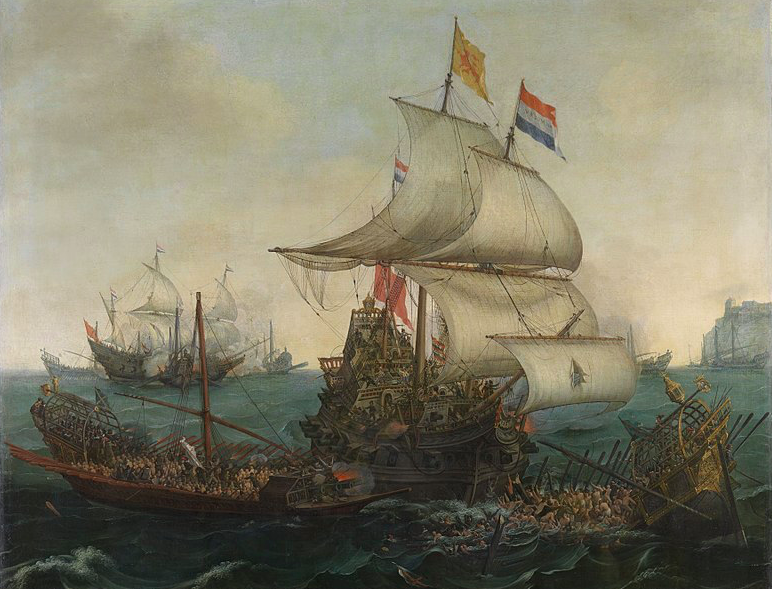
However, Spain did not want to wage a second all-out war on the Dutch Republic. Instead, they attempted to capture a few strategic ports and leave it like that.
This failed — a siege on Bergen-op-Zoom had to be lifted after a few months. So the Spanish switched to economic warfare.
We’re not talking about sanctions here, though; we’re talking about attacking ships. Dutch ships had to sail in convoys with naval escorts just to trade with other countries.
And, as you know, at this point in history, the Dutch were kings of sea trade, from the VOC to the WIC. The VOC was richer than Apple, Google and Facebook combined, but having their main source of income and power disrupted was a major problem.
The Spanish were also able to shut off Dutch internal waterway connections to Germany, causing the price of dairy to drop dramatically.
However, by doing this, the Spanish also made trading harder for themselves, so the real beneficiaries of the trade war were the European countries that remained neutral.
The Dutch do well, and then they don’t, and then they do again
Maurice of Nassau died, which brought almost immediate improvements to the situation in the Dutch Republic.
Among other things, they strengthened and grew their army in preparation for the second act they knew was coming. England also entered the war as their ally.
The war took off again with Frederick Henry, the new Prince of Orange, attacking the southern provinces of the Netherlands.
He also issued a statement, very much against the wishes of some of his advisors, saying that Catholics in the southern Netherlands would be able to continue practising their religion if they joined the Dutch Republic.
This was a very effective move, with many of the southern provinces deciding they really did want to throw off the Spanish yoke of oppression.
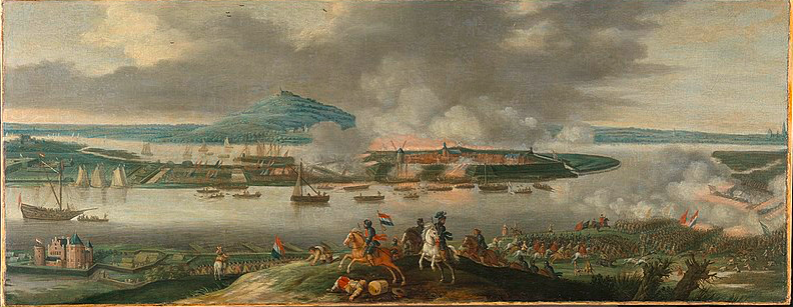
Talks ensued with the Spanish in 1632, which did not reach any useful conclusion, and Henry broke them off in 1633. Following victories in their war against Germany, the Spanish made inroads into the southern Netherlands once more.
With any hope of peace with the Spanish fading, Henry decided to consider an alliance with France.
In February 1635, France and the Netherlands signed a treaty to invade the southern Netherlands later that year.
What should have been a very effective strategy did not work as planned: the Spanish forces were strong enough to defeat the Dutch attack, after which the French also piped down.
During this attack, the Spanish besieged Schenkenschans, a crucial tactical location for the Dutch Republic.
After the Spanish captured it, the Dutchies besieged it themselves and eventually took it back from the Spanish — which was an embarrassing defeat for them.
But then the pro-peace party in the Dutch Republic gained popularity and decided to cut spending on the army. That wasn’t all bad news for the Dutch Republic, though.
The lack of spending on military budgets, combined with increased German demand for foodstuffs, freed up a lot of money. Notoriously, some of it was spent on tulip bulbs (0/10 investment, would not recommend).
The Spanish run out of money: the Eighty Years’ War grinds to a halt
Despite its lack of military spending, the Dutch Republic was generally victorious at the end of the 1630s.
The Spanish were left under no illusions that the Dutch navy was the most powerful in the world. The proxy wars fought by the VOC and WIC against the Spanish had also mostly gone in the Republic’s favour.
The war ground to a halt gradually, as the Spanish realized they could no longer afford the expense of a constant conflict.
The Peace of Munster and the end of the Eighty Years’ War
In January 1646, negotiations on a peace treaty officially began as part of the larger Peace of Munster.
The treaty was relatively easy to draft, as the text was essentially copied from the treaty providing the Twelve Years’ Truce. By June 1648, the peace was official.
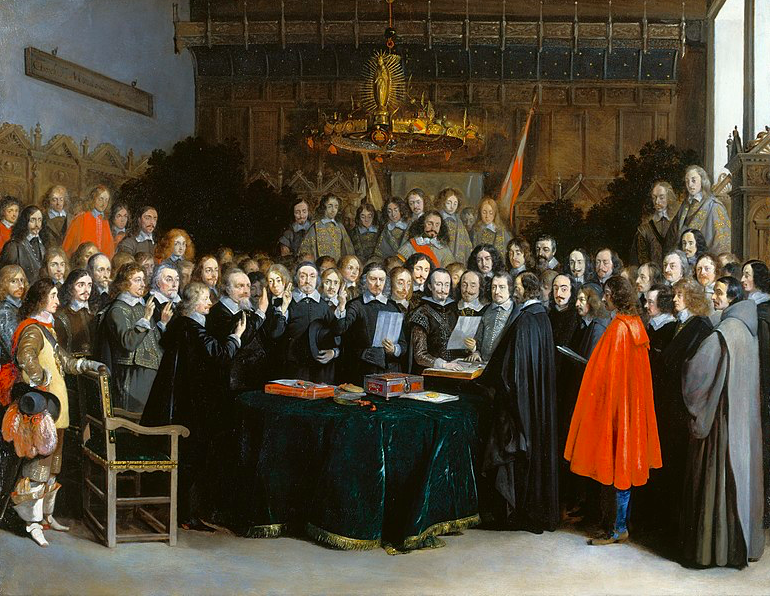
What did the Eighty Years’ War accomplish? Well…
Uh, well, not a whole lot, really.
Of course, most importantly, the Dutch Republic was a sovereign state that gained power and influence for the next centuries.
Borders resembling the modern-day ones between the Netherlands and Belgium were drawn.
READ MORE | Leidsch Ontzet on October 3: the most beautiful day of the year!
The VOC and WIC gained power and territory.
The Spaniards lost their reputation as a formidable force in Europe—they had, after all, lost to a ridiculously small country.
Did we miss anything in this tale of the 80 Years’ War? Let us know in the comments below.
Feature image: Rijksmuseum/Wikimedia Commons/CC4.0






I’ve been away from the Netherlands 60 years, but I love reading all your articles!
Thanks for keeping me up to date with what’s going on in my little country!
Good job you all ! !
You might have mentioned that in 1573 at Alkmaar began the victory, Leyden was freed in 1574 and Antwerp destroyed in 1576. Also prince Maurice had Johan van Oldenbarnevelt beheaded.
The VOC and the WIC were not the main source of income. The WIC was a financial failure mostly and the VOC only started paying dividend in 1631 because it was busy growing and fighting. And even at it’s peak a couple of decades later it returned less money than the herring fishery alone, the book printing industry was more profitable too.
The main source of income was the European trade, the Baltic, the North Sea and the Mediterranean. Not as adventurous and exiting, but far bulkier, safer, frequent and regular. Europeans were consuming a lot more wheat than nutmeg of course and used a lot more wood than Chinese vases that took a year to transport.
The 80-years war didn’t accomplish a whole lot? Really?
It was the beginning of religious freedom, the start of the people’s sovereignty and it’s inalienable right to remove tyrants, the beginning of the end of the divine right of kings, the beginning of the end of absolute monarchies, the beginning of modern capitalism, the beginning of social mobility, equality and citizenship, the beginning of freedom of press (were do you think Descartes and Locke worked and the other enlightenment philosophers had their books printed?), it was even the beginning of the British parliamentary monarchy, the bill of rights, religious tolerance in Britain throug the 1688 invasion. The Dutch Republic took Europe out of the Dark Ages in those 80 years.
Please explain what the VOC and WIC ARE/mean?
Hi Trieneke 🙂 The VOC stands for ‘Vereenigde Oostindische Compagnie’ or Dutch East Indian Company. The WIC stands for West Indian Company. If you want to read more on this topic, maybe check out this article: https://dutchreview.com/culture/history/voc-dutch-east-india-company-explained/.
We hope that helped!
– The DR-Team
Thank you. Interested in moving to the Netherlands and also learning their history.
Did spanish soldiers cross into north france to attack the netherland around 1640
Danke for this concise depiction of the 80 years war. Comments :
1.The VOC and WIC clarification with links is very useful.
2. Ailish should underline that the Spanish troops were really cruel to civilians, murdered unarmed by the thousands, state terrorism.
The Spanish troops tried to carry out a religious holocoust but failed. They exterminated the Mexican indigenous culture. The Spanish brought in their version of the infamous Gestapo and SS : The Inquisition. Ailish should elaborate on how atrocious the ‘santo oficio’ was.
3. Also, I know from reliable sources that the gold and silver from the Spanish South American colonies that was supposed to reach the Spanish troops was plundered along the ‘ruta de la plata’ Seville – Extremadura – Salamanca – Galicia, by the Spanish themselves : The Spanish crown was since 1492 the agreed union of 2 kingdoms, Castille (where the Visigods that sank the Roman empire eventually settled) and Aragon (descendants of greek traders and romans). And since the beginning that union has been like a marriage where a peniless arrogant and violent husband (Castille) plundered and robed and abused the counterpart (Aragon).
The Spanish king Philip II was a monster : He sent up Catalans to fight the kingdom inherited from the crown of Aragon. Then allowed Andalusians Castilians and Gallegos to steal the gold for the Spanish troops in the Netherlands.
4. Philip II was such a bad king that upon realising he had lost the then most prosperous ports in Europe (by no means and far from what Ailish calls a ‘ridiculously small country’), hired a french noble to murder the head of the house of Orange. The assassin managed, was caught, but the familiy of the assassin, as promised by the Spanish king, never got paid what was owed by the Spanish king for the point blank shooting of the Netherlands leader.
5. Getting rid of a king with no word, promoting religious holocaust, inciting troops to carry out state terrorism, not paying troops, for months, yet allowing one half of Spain to steal from the other half, an incestuous king who used the 80 years war to reduce the population of Aragon of young males sent up, so the lazy Visigods they are could show up and settle in Catalonia.
https://youtu.be/1_gfvo_LlaA?si=oCso7qHgFITk4kK8
Defeating the tercios and sending the Spanish Inquisiton out was the greatest accomplishment of the century.
6. The Netherlands independence was a turning point in history : It was large scale proof that as Daniel Defoe wrote : wars are not won by the longest sword but by the deepest pocket.
So many untruths and falsehoods in this ignorant comment that is even boring answering them… Not surprised there is not a single reference provided. It is not OK to have such many prejudices.